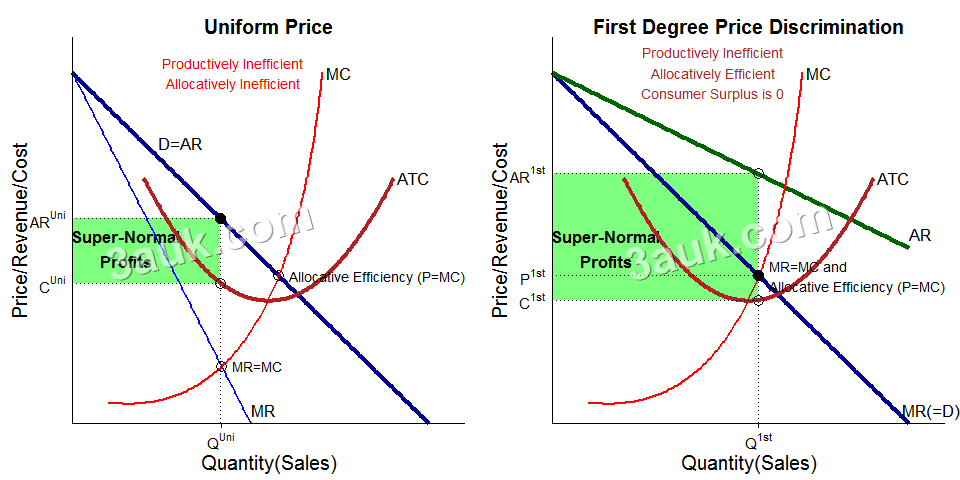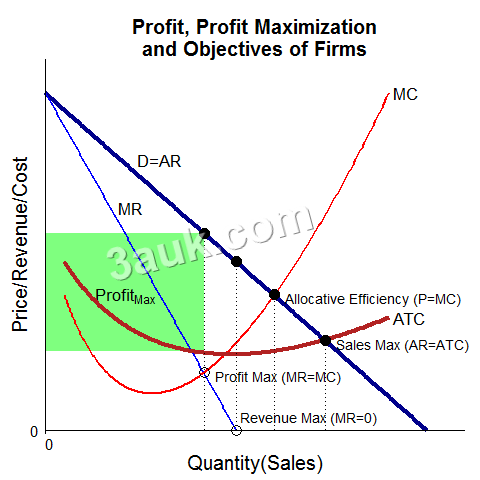Content
- Topic Questions (MCQ – EASY): Growth (Size), Objectives of Firms
- Topic Questions (MCQ – HARD): Growth (Size), Objectives of Firms
other objectives of firms: survival; profit satisficing; sales maximisation; revenue maximisation
- Survival: A firm may prioritize survival over maximizing profits, especially during tough economic times. The firm may cut back on investments and reduce costs to ensure that it can continue to operate in the short term.
- Profit satisficing: A firm may aim to achieve a satisfactory level of profit rather than maximizing profit. This is because pursuing higher profits may require taking on more risk or making large investments that may not be worth the effort.
- reasonable level of profits to satisfy shareholders but keep other stakeholders satisfied (e.g. customers, managers, employees, suppliers, local government, government)
- Sales maximization: A firm may prioritize maximizing sales revenue over profit. By maximizing sales, the firm can achieve economies of scale and lower production costs.
- achieved at P = ATC
- Cross-subsidisation
- State-owned firm to maximize social welfare, e.g. supply essential goods such as water
- deter new entrants
- Revenue maximization: A firm may aim to maximize revenue, which is the total amount of money it earns from sales of its products or services.
- achieved at MR = 0
- to increase market share in a growing market
- management salaries tied to the sales revenue (behavioural explanation)
- demand is price elastic
price discrimination

- Price discrimination refers to a pricing strategy in which a firm charges different prices for the same product or service in different markets or to different groups of customers.
- There are three degrees of price discrimination.
- First-degree price discrimination, also known as perfect price discrimination, occurs when a firm charges each customer the maximum price they are willing to pay.
- This is only possible if the firm has perfect information about each customer's willingness to pay.
- This is only possible if the firm has perfect information about each customer's willingness to pay.
- Second-degree price discrimination involves charging different prices based on the quantity of the product purchased.
- For example, a firm may offer a discount for bulk purchases.
- For example, a firm may offer a discount for bulk purchases.
- Third-degree price discrimination occurs when a firm charges different prices to different groups of customers based on their willingness to pay.
- For example, a movie theater may charge lower prices for senior citizens or students.
- For example, a movie theater may charge lower prices for senior citizens or students.
- First-degree price discrimination, also known as perfect price discrimination, occurs when a firm charges each customer the maximum price they are willing to pay.
- For price discrimination to be effective, certain conditions must be met.
- The firm must have market power, meaning it has some control over the price it charges.
- Identify different elasticities of demand for different market sectors (i.e. students, the elederly, working class)
- It must also be able to separate customers into different groups based on their willingness to pay.
- Price discrimination can have several consequences.
- It can increase the firm's profits by extracting more revenue from customers who are willing to pay more. (larger profits can help cover costs, e.g. high capital cost, research)
- Some groups benefits with lower prices - lower prices for the elderly and students
- However, it can also lead to a loss of consumer surplus for those who are charged higher prices.
Join the conversation
